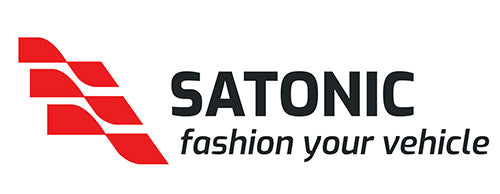When comparing the Tesla Model 3 and Xiaomi SU7, it’s essential to evaluate key aspects such as performance, design, technology, pricing, and usability. While the Tesla Model 3 is a well-established electric sedan with global acclaim, Xiaomi’s SU7 is a newer entrant with its unique strengths. Let’s dive into the details:

1. Performance
Tesla Model 3:
- Powertrain Options: Available in three variants – Standard Range RWD, Long Range AWD, and Performance AWD.
- Battery and Range: Depending on the variant, the range varies from approximately 272 miles (Standard Range) to 358 miles (Long Range).
-
Acceleration:
- Standard Range: 0-60 mph in 5.8 seconds.
- Performance: 0-60 mph in 3.1 seconds.
- Charging: Supercharger network supports up to 250 kW, enabling fast charging with widespread coverage globally.

Xiaomi SU7:
- Powertrain: Equipped with an all-electric motor focused on urban commuting and moderate inter-city travel.
- Battery and Range: Estimated range of around 280 miles, comparable to Tesla’s Standard Range.
- Acceleration: Approximately 0-60 mph in 6 seconds.
- Charging: Utilizes Xiaomi’s fast-charging infrastructure, though it is less extensive than Tesla’s Supercharger network.
2. Design and Build
Tesla Model 3:
- Minimalist exterior design with a focus on aerodynamics and efficiency.
- Interior emphasizes simplicity with a single 15-inch touchscreen as the centerpiece.
- Premium materials, although some critics note occasional inconsistencies in fit and finish.
- Larger trunk space and front (frunk) storage for versatility.
Xiaomi SU7:
- Sleek, futuristic design with sharp contours.
- Slightly more compact than the Model 3, targeting urban drivers.
- The cabin integrates Xiaomi’s design philosophy, featuring smart surfaces and a dual-screen setup for the driver and passengers.
- Moderate trunk space, optimized for urban needs.
3. Technology and Infotainment
Tesla Model 3:
- Operating System: Tesla’s proprietary software with regular OTA updates.
- Touchscreen: 15-inch central display managing all car functions, including navigation, media, and climate control.
- Connectivity: Tesla App for remote control, monitoring, and scheduling.
- Autopilot: Industry-leading driver-assistance features with options for Full-Self Driving (FSD) capabilities.
- Third-Party Apps: Limited support but robust built-in features like Spotify, Netflix, and Tesla Arcade.
Xiaomi SU7:
- Operating System: Customized Android-based interface.
- Displays: Dual screens – one for the driver and an entertainment screen for rear passengers.
- Connectivity: Integrates seamlessly with Xiaomi’s ecosystem, including smart home controls.
- Assisted Driving: Xiaomi Pilot, a new ADAS suite offering navigation assistance, adaptive cruise control, and lane keeping.
- Third-Party Apps: Open support for Android apps, offering a wider selection than Tesla.
4. Pricing
Tesla Model 3:
- Pricing starts at $39,990 for the Standard Range and goes up to $54,990 for the Performance variant.
- Ownership costs are lower compared to ICE vehicles but include expenses for premium connectivity and maintenance.
Xiaomi SU7:
- Positioned as an affordable EV option, with prices expected to start at approximately $28,000.
- Xiaomi aims to capture budget-conscious buyers while delivering competitive features.
5. Ecosystem Integration
Tesla Model 3:
- Integration with Tesla’s ecosystem, including Superchargers, Solar Roofs, and Powerwalls.
- Highly optimized software but limited compatibility with third-party ecosystems.
Xiaomi SU7:
- Tightly integrated with Xiaomi’s ecosystem, allowing users to control smart home devices directly from the car.
- Greater flexibility with Android-based software for app and device compatibility.
6. Warranty and Support
Tesla Model 3:
- Vehicle warranty: 4 years/50,000 miles.
- Battery and drive unit warranty: 8 years/100,000-120,000 miles, depending on the variant.
- Global support with service centers in major cities worldwide.
Xiaomi SU7:
- Vehicle warranty: 3 years/60,000 miles.
- Battery warranty: 8 years/100,000 miles.
- Service infrastructure is developing but currently more limited than Tesla’s.
Conclusion
The Tesla Model 3 remains the go-to choice for long-range EVs with cutting-edge technology and a proven track record. Xiaomi SU7, on the other hand, is an affordable and feature-rich option for urban drivers, particularly for those already invested in Xiaomi’s ecosystem.
Your choice depends on your priorities:
- Opt for the Tesla Model 3 if you value range, performance, and advanced self-driving capabilities.
- Choose the Xiaomi SU7 if you’re budget-conscious and seek seamless integration with Xiaomi’s smart devices.
Which EV resonates with your needs? Let us know in the comments!
Would you like a version of this tailored for a specific audience or platform?




























